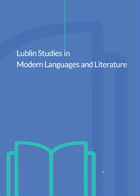“With mine own tears I wash away my balm”: The King’s two bodies in Shakespeare’s Richard II and King Lear.
“With mine own tears I wash away my balm”: The King’s two bodies in Shakespeare’s Richard II and King Lear.
Author(s): Sélima LejriSubject(s): Literary Texts
Published by: Wydawnictwo Naukowe Uniwersytetu Marii Curie-Sklodowskiej
Keywords: Shakespeare; Richard II; King Lear
Summary/Abstract: The aim of this paper is to delineate the representation of kingship in Tudor and Stuart England and its articulation in Shakespeare’s political drama, through the examples of Richard II (1599) and King Lear (1606), two illustrative plays of the respective eras. Conceived of as two-bodied, the sovereign is, from early medieval times, positioned in an uneasy liminal state whereby his natural body is also the incarnation of the mystical concept of the ever-lasting Body politic. Anxieties over this seemingly unbreakable continuity of mystical kingship become nonetheless palpable as Queen Elizabeth I lies dying, leaving no heir to the throne of England. The first Stuart monarch hence reinforces the doctrine of The Divine Right of Kings by confidently advancing the unique precedence of godhead over manhood in the monarch. Set in this context, Shakespeare’s two political figures question the validity of the king’s impregnable nature as they grapple with their human condition exposed to all mortal ills. When Richard II’s “tears wash away (his) balm” and his meta-physiological body withal, Shakespeare exposes the frailties underneath the fiction of the monarch’s two-bodied nature parodied in King Lear as “every inch a king”.
Journal: Lublin Studies in Modern Languages and Literature
- Issue Year: 38/2014
- Issue No: 2
- Page Range: 43-56
- Page Count: 14
- Language: English

